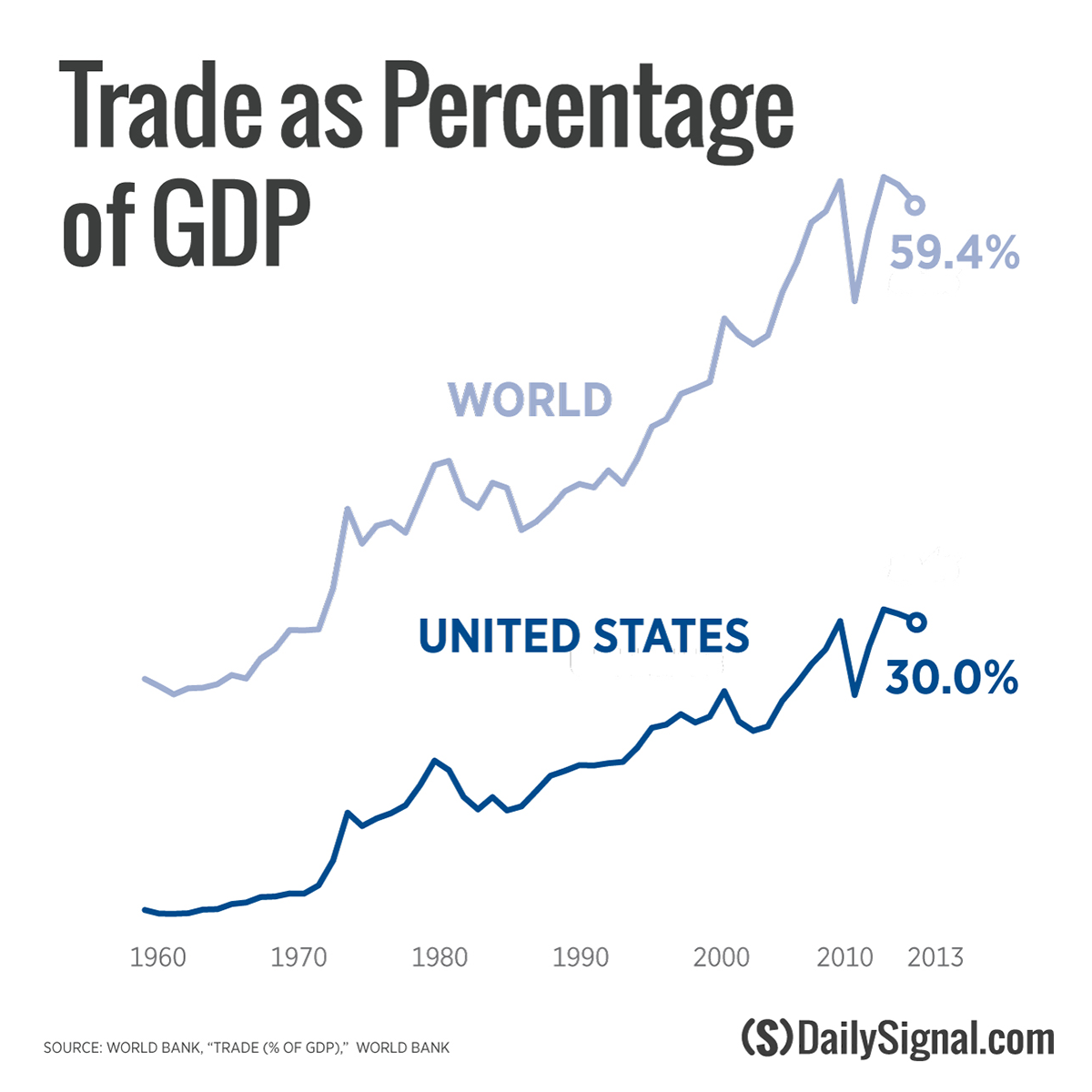You may not know it, but May is World Trade Month. According to Stefan M. Selig, U.S. Under Secretary of Commerce for International Trade:
Every year, World Trade Month—designated for the month of May—gives us the opportunity to acknowledge the importance of global trade, and look back at the economic advancements we have made as a result. This World Trade Month, we can look back and appreciate the success we have accomplished.
Despite the success claimed by the U.S. Department of Commerce, the United States actually lags behind the world in the use of trade.
While the U.S. average tariff rate is only 1.5 percent, some products, like pick-up trucks, are subject to exorbitant special interest tariffs.
In the United States, international trade is equal to about 30 percent of gross domestic product (GDP). The average for the rest of the world is nearly double that.
Congress should take World Trade Month to do more than pat itself on the back.
Bryan Riley, senior policy analyst at The Heritage Foundation, tasks Congress with “[eliminating] all tariffs on inputs used by U.S. manufacturers to compete in the global economy” because “tariffs on intermediate goods drive up the cost of manufacturing.”
The Index of Economic Freedom, published annually by The Heritage Foundation and The Wall Street Journal, demonstrates that countries with low tariffs have higher growth rates, higher per capita incomes, lower rates of hunger, and cleaner environments. As Ronald Reagan once said:
The winds and waters of commerce carry opportunities that help nations grow and bring citizens of the world closer together.
Put simply, increased trade spells more jobs, high earnings, better products, less inflation, and cooperation over confrontation. The freer the flow of world trade, the stronger the tides for economic progress and peace among nations.
This should serve as a reminder of the benefits of free trade, help kick start new efforts to increase exports and imports, and ultimately lead to greater choice and lower prices for American businesses and families.





























